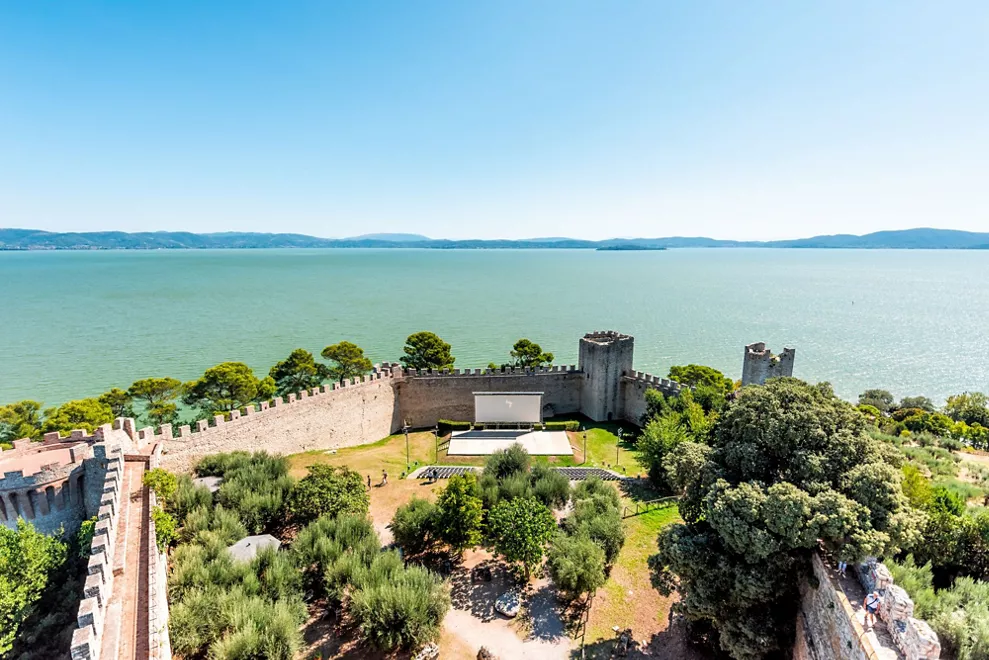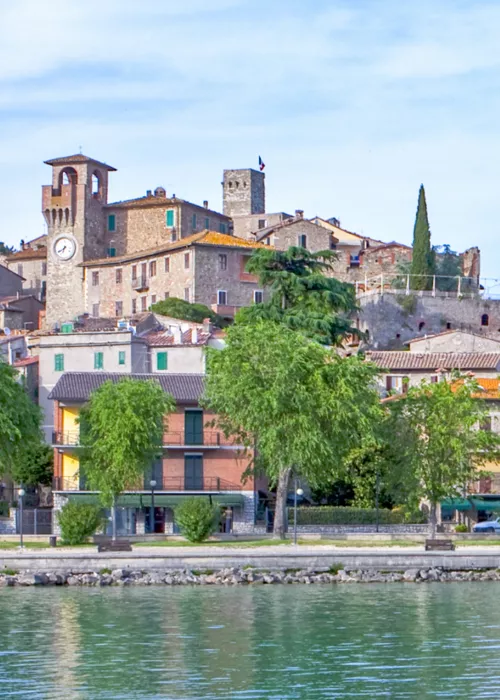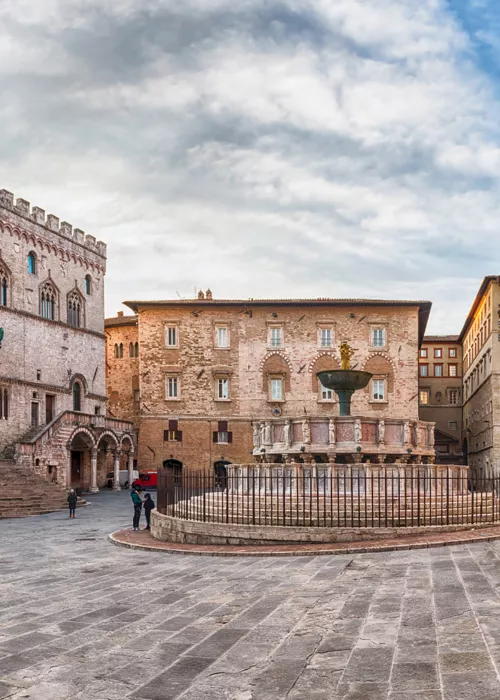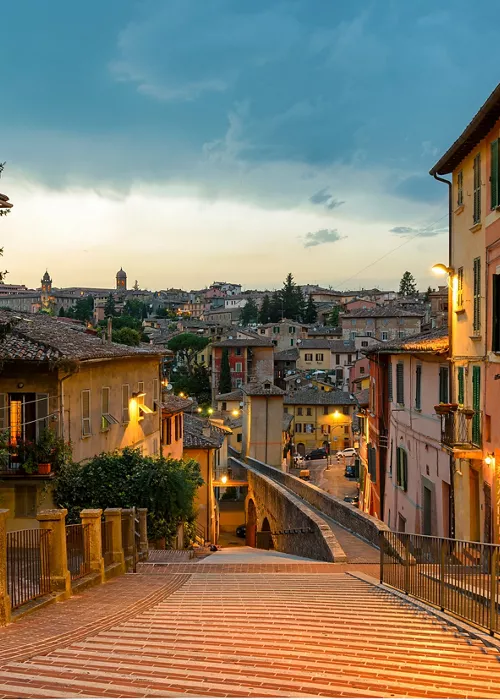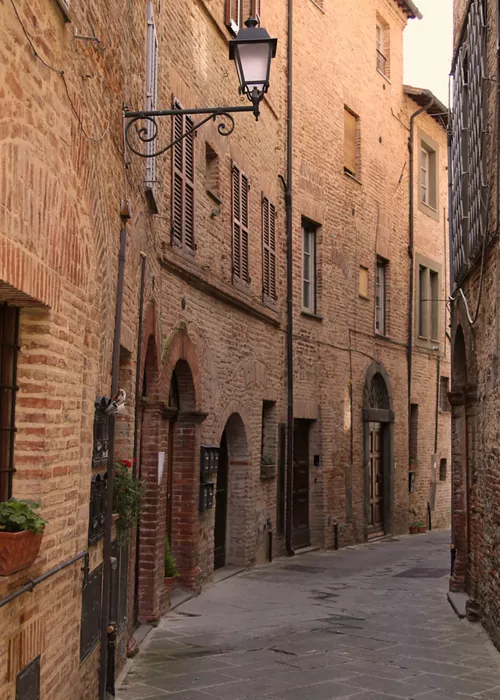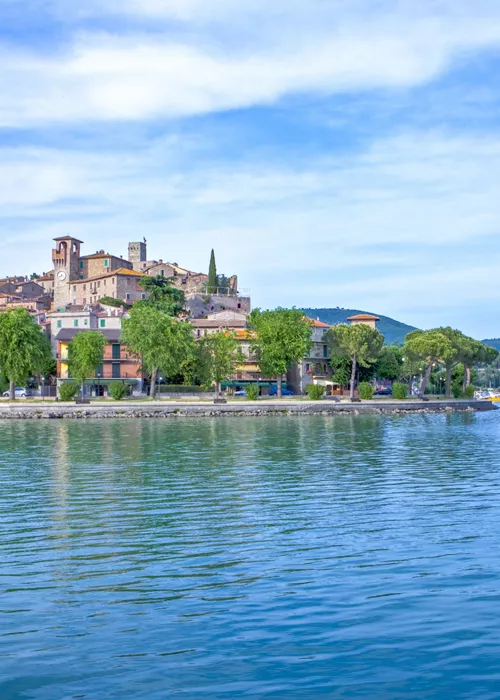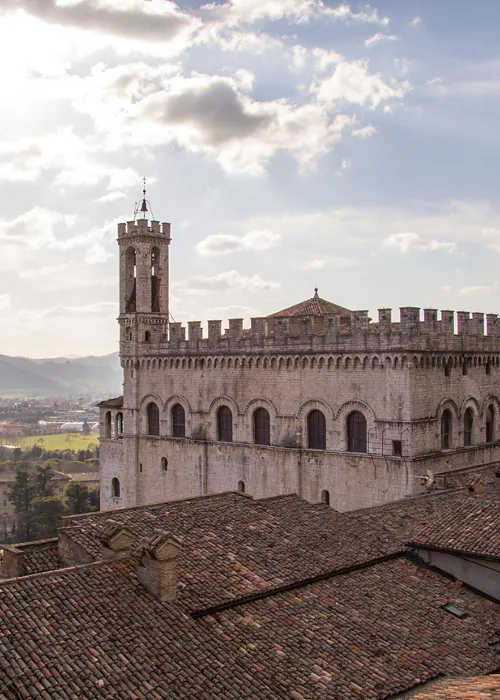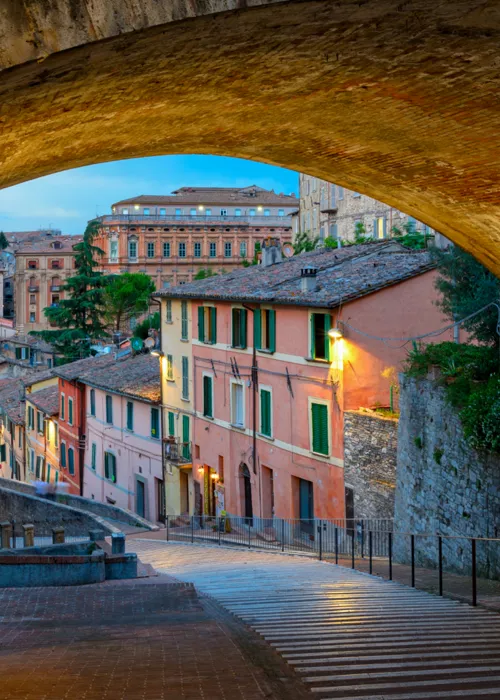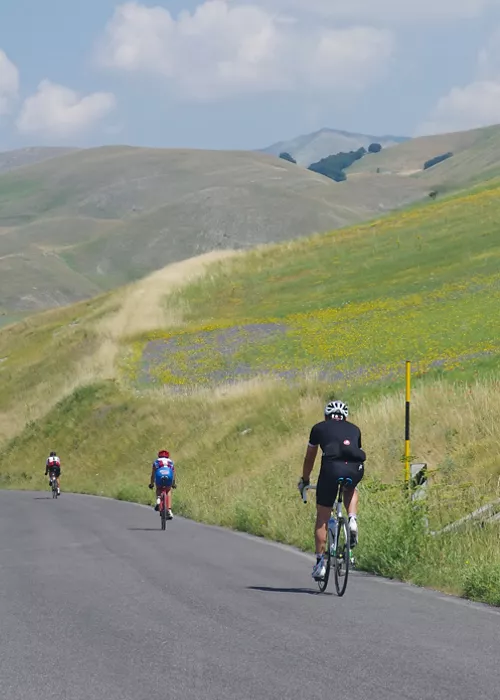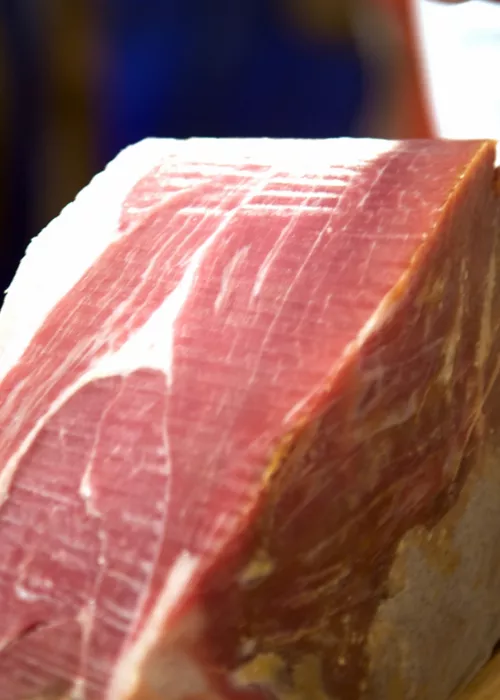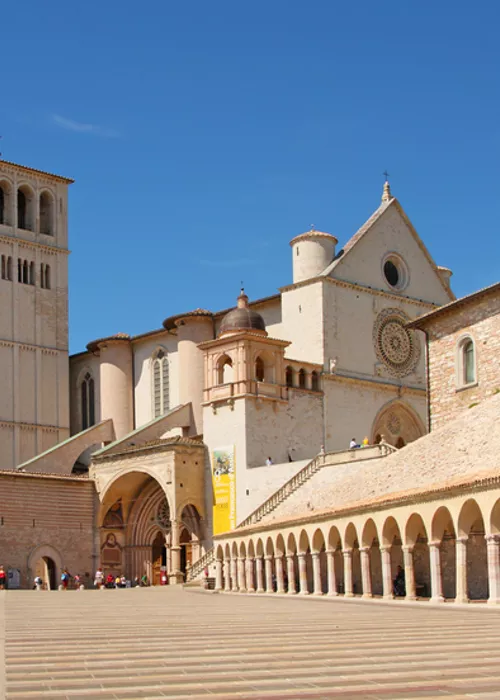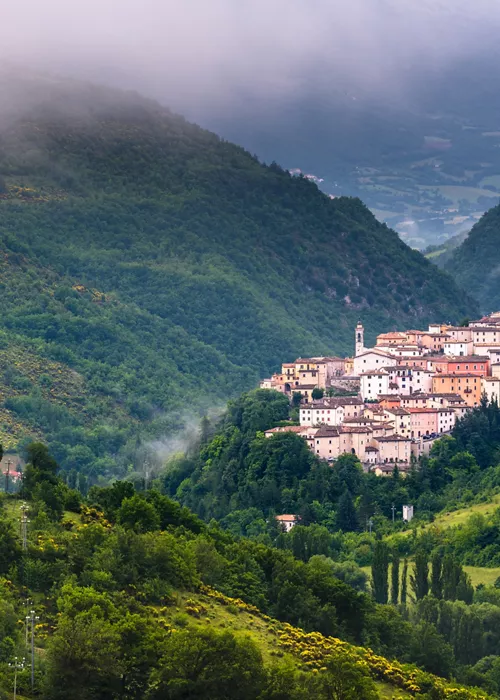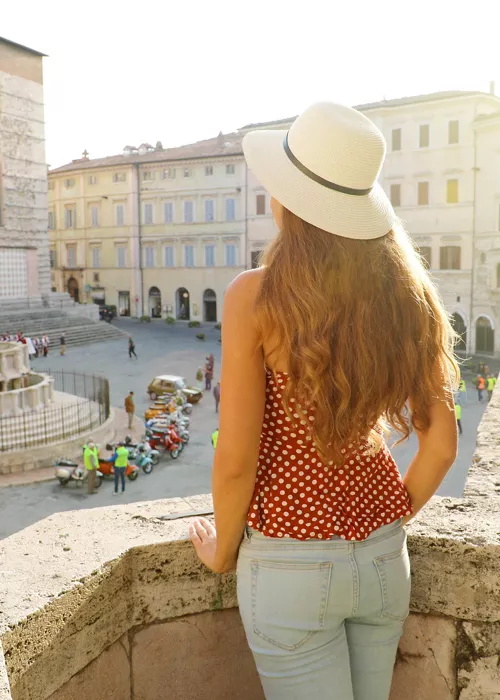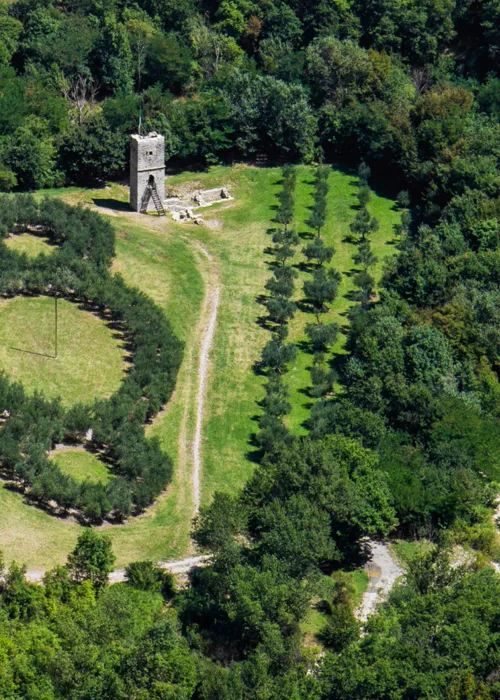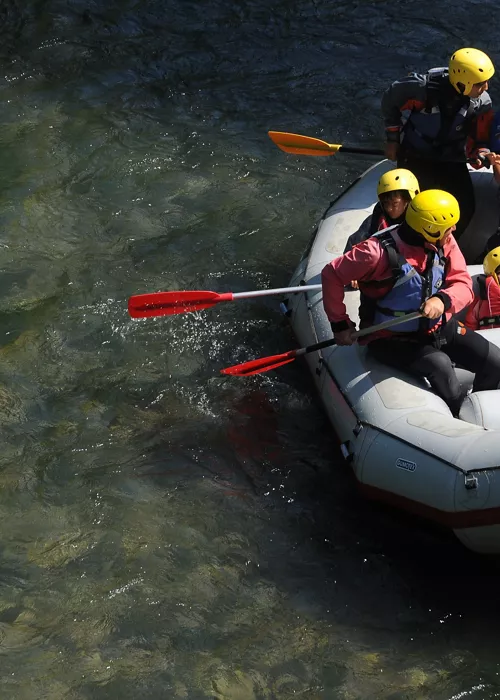Castiglione del Lago, a balcony on Lake Trasimeno
2 minutes
Built on a limestone headland, Castiglione was originally an island in the lake, later incorporated by the mainland. Today it retains a beautiful historic centre, the first stop on any visit to Lake Trasimeno.
A village and an exercise in architectural style
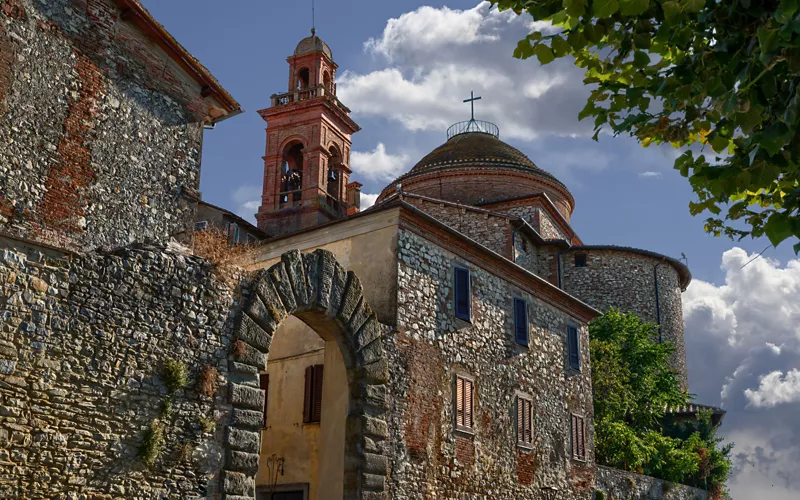
The historical core of Castiglione del Lago retains its 12th-century medieval walls and three access roads lead to three squares. An urban design ordered in 1563 by Ascanio Della Corgna, the nephew of Pope Julius III who became duke of these lands. The reorganisation of the space was almost an exercise in style based on the ideas of Vignola, the mannerist architect who was all the rage in Rome at the time.
The most important building in the village is the majestic Palazzo Della Corgna, on Piazza Gramsci, which was attributed to Vignola. Inside, there are eight large rooms with fresco cycles by Pomarancio (Niccolò Circignani) painted between 1574 and 1590 to celebrate the exploits of Ascanius with classical mythological themes.
Also worth seeing are the frescoes in the part of the building reserved for the Municipal Library depicting the World upside down: in these interesting paintings, the mouse catches the cat and the hare the hound, almost a warning not to subvert the natural order of things. Around Castiglione, on both the southern and northern shores, there are well-equipped beaches for relaxing by the lake, with a number campsites where you can stay.
The Medieval Fortress
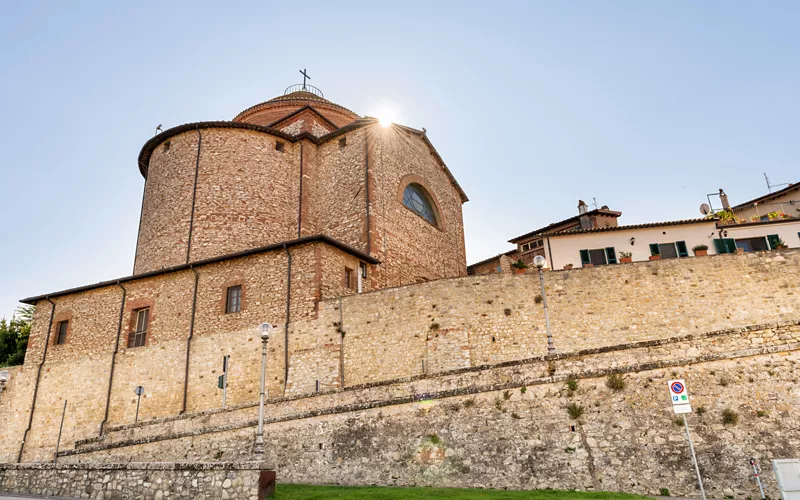
From the Della Corgna palace, a charming covered walkway leads to the medieval Rocca, known as the Rocca del Leone, from which the place name Castiglione is derived. The plan is an irregular pentagon surmounted by a triangular-section tower with Guelph battlements.
The fortification was built from the 12th century onwards and subsequently remodelled over the centuries. During the 14th century, the Sienese architect Lorenzo Maitani (author of the facade of Orvieto Cathedral) also worked on it, and it was further extended in the 16th century when it became the residence of the Baglioni family.
Cycling around the lake

From Castiglione del Lago there is a cycle-pedestrian path that enables visitors to circumnavigate Lake Trasimeno, some sixty kilometres long.
A large part of the route involves dirt tracks through the countryside bordering the shores of the lake. Heading north, one reaches Borghetto after a few kilometres, with a bar-restaurant and picnic area. Another hour takes you to Tuoro sul Trasimeno, after passing through the sites of the Battle of Trasimeno, where Hannibal defeated the Romans during the Second Punic War in 217 BC. Also in Tuoro, near the landing stage for the Isola Maggiore, is Campo del Sole, an evocative open-air contemporary sculpture park by the lake.
The next stop is Passignano, a pleasant town overlooking the lake with dozens of bars and restaurants. With a few climbs and several vantage points, one proceeds towards Torricella and Monte del Lago, to San Feliciano, another important lakeside town, where one can embark for Isola Polvese.
From here, you cycle on the ordinary road to the La Valle nature reserve, where the protected track along the south bank, characterised by alternating cultivated fields and woods, resumes.
For the last section of the loop, between Panicarola and Castiglione del Lago, we return to the ordinary road, at least until the track is completed.

